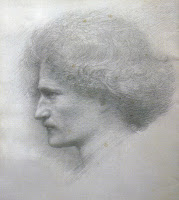Polish pianist Piotr Banasik and the Paderewski Symphony Orchestra play the CHOPIN IN MY HEART 200TH ANNIVERSARY GALA CONCERT at Orchestra Hall at Symphony Center. The concert is part of the PSO's efforts to build a cultural bridge between the American and Polish communities. March 26, 8 p.m. Tickets are $38-$58. 220 S. Michigan Ave., (312) 294-3000 or (773) 957-7777, www.cso.org or http://www.pasochicago.org/.
For nine other things to do, click here.
Paderewski on Prairie Ave.
Many Chicagoans don't realize that during the nineteenth century, Prairie Ave. was the center for art, music, and culture. Many residents were patrons of the arts, including John and Frances Glessner who lived at 1800 S. Prairie Ave. The Glessners were early supporters of the Chicago symphony. They helped recruit the first conductor, Theodore Thomas, and helped raise the funds for Orchestra Hall.
The World's Columbian Exposition of 1983
 When the World's Columbian Exposition was held in Jackson Park, musicians from all over the world came to Chicago. The expo included among it's many buildings, a huge concert venue where musicans could share their talents with the world. Paderewksi was one such artist. He brought his world-class talent to the fair along with his Steinway piano.
When the World's Columbian Exposition was held in Jackson Park, musicians from all over the world came to Chicago. The expo included among it's many buildings, a huge concert venue where musicans could share their talents with the world. Paderewksi was one such artist. He brought his world-class talent to the fair along with his Steinway piano.Kimball v. Steinway
Another resident of Prairie Ave. was William W. Kimball, 1801 S. Prairie Ave., of Kimball Piano and Organ fame. Mr. Kimball supposedly made a deal that the only pianos allowed at the World's Fair would be those manufactured by his company (sounds like a Chicago deal, doesn't it?). Would Paderewski play symphonies using a Kimball piano?
Steinway spokesman
To help establish their company as the premier piano maker, Steinway and Sons associated themselves with artists like Paderewski. Like an athlette with an apparel agreement, Paderewski couldn't possibly use a Steinway. The story goes that Paderewski had to sneak his piano to the fairgrounds. Considering the size of the fair and the amount of things moving in and moving out of Jackson Park, it probably wasn't too hard to sneak something inside. In any event, it makes a great story.
History in the South Loop
To learn more about Prairie Ave., Chicago's first gold coast, be sure to visit the Glessner House Museum. There you'll learn about the other famous residents and discover what it was like to live among the "sifted few" and how and why life on Prairie Ave. went into decline.
If you can't make it to the museum, but would like to learn more, check out Chicago's Historic Prairie Ave., written by William H. Tyre, executive director of the Glessner House Museum.

No comments:
Post a Comment